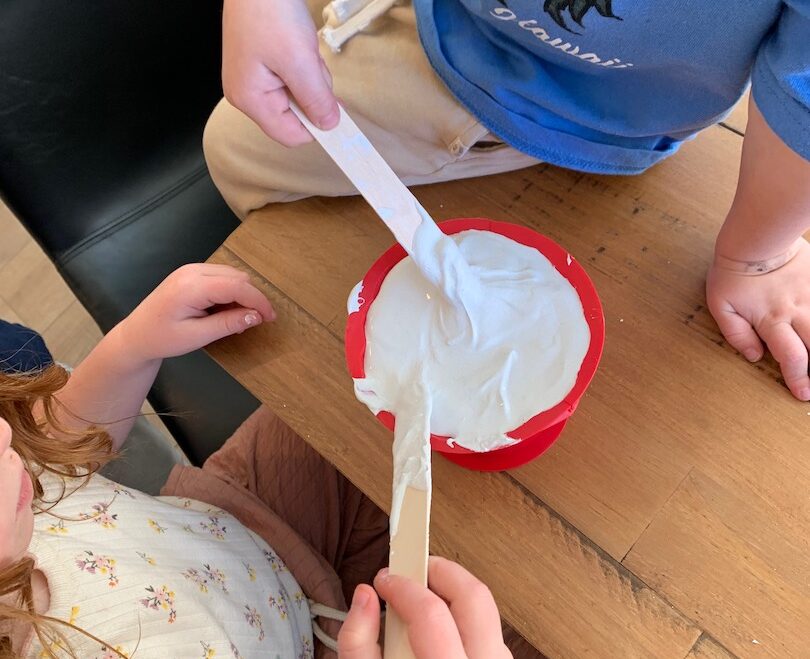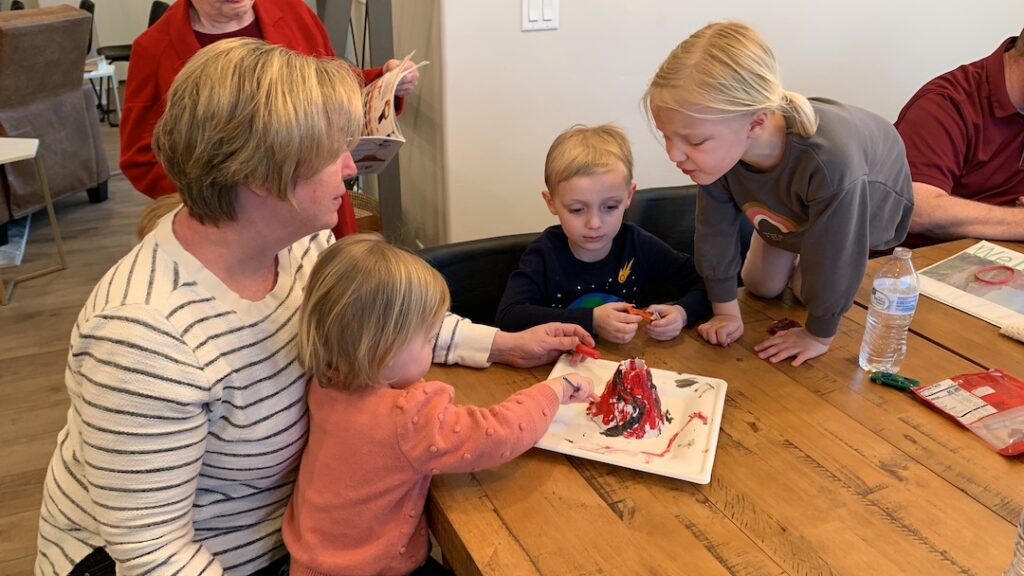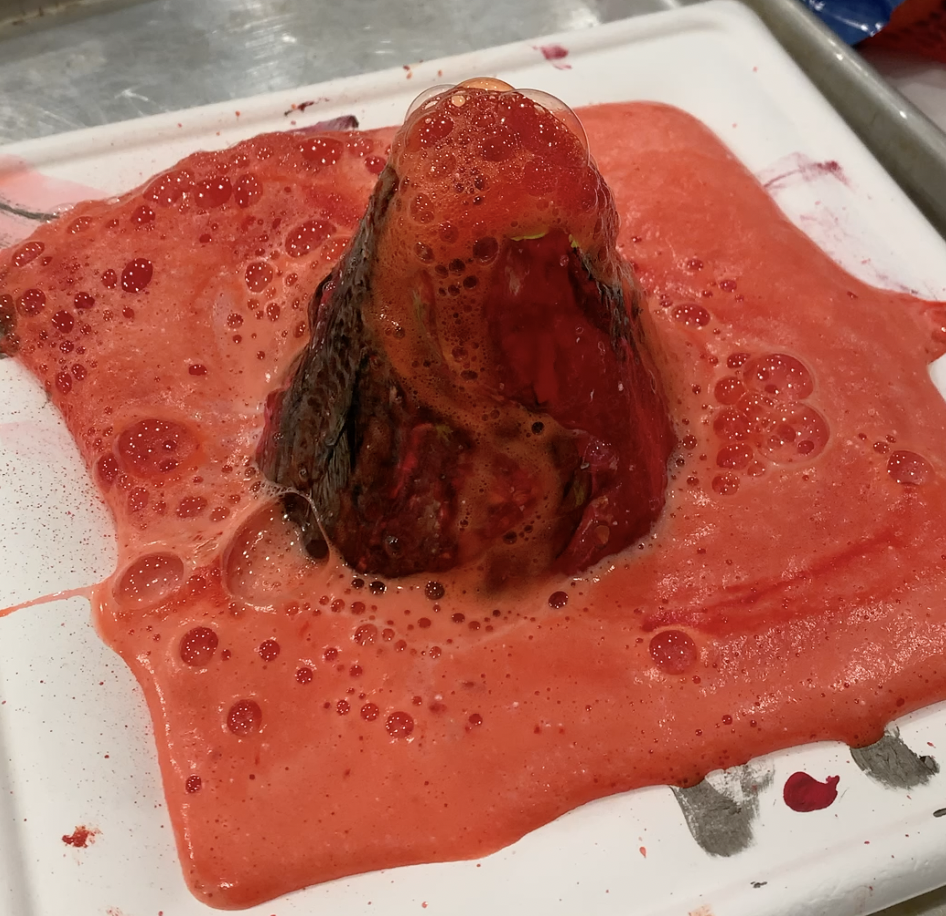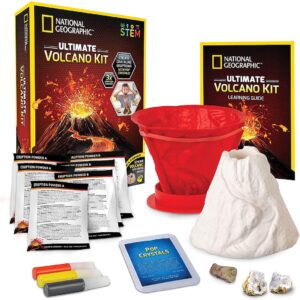There is no shortage of model volcanoes and volcano-making tutorials on the Internet. A baking soda and vinegar volcano is almost a childhood rite of passage. So here’s a question I have been pondering:
Does a Model Volcano Actually Teach the Real Science Behind Volcanoes?
According to the U.S. Geological survey, a volcano works like this:
“Deep within the Earth it is so hot that some rocks slowly melt and become a thick flowing substance called magma. Since it is lighter than the solid rock around it, magma rises and collects in magma chambers. Eventually, some of the magma pushes through vents and fissures to the Earth’s surface.”
Mixing vinegar and baking soda may produce something like what might be going on inside of a volcano, but if we are being honest with ourselves, it’s a pretty limited comparison. There’s just so much more to a volcano than we can accurately produce with a chemical reaction made with kitchen supplies!
So a model volcano may not be the very best way to teach the science behind a volcano, but truth be told, kids just don’t care. Creating curiosity usually involves starting with some kind of “wow” factor, and volcanoes provide plenty of WOW!
National Geographic Ultimate Volcano Kit
For the $17 I paid, we got our money’s worth with our National Geographic Ultimate Volcano Kit. The kit comes with everything you need to craft a model volcano, paint it, and then create multiple eruptions. If it’s easier to lay down cash than to gather supplies, this is the solution for you! It will provide a couple of hours of fun for kids who love to get their hands messy. I’d recommend adult supervision for just about every step in this kit.
Cost: About $17
Time Needed: We spread the activity out over 3 days, but you could manage it in two if needed.
Messiness: High — Adult supervision recommended
Building the National Geographic Model Volcano
Day 1: We took this kit with us as part of the Volcano Playdatebox. You simply assemble the plastic mold, attach rubber bands to hold it all together, and then mix up and pour in some white plaster. Then, you wait…

Day 2: Painting day. There is a small supply of paints and a single brush included with the kit. We let each of the kids take turns painting a few strokes with each color once the plaster was dry.

Day 3: The eruption. We put the volcano on a paper plate and then set the paper plate on a cookie sheet to prevent a spill. There’s some pretty heavy-duty food coloring in the kit, so be sure to protect your surfaces. We tried different combinations of chemicals to get different reactions. Your kit includes citric acid, sodium bicarbonate, and pop crystals. We added a drop or two of liquid dish soap to improve the “foaming action” of our volcano.
What is Included With This Model Volcano Kit?
In addition to the plaster, the model mold, paints and paintbrush, and chemicals for several eruptions, you’ll find a colorful guide that teaches about the structure of the earth, plate tectonics, types of volcanoes and more. There are even a couple of rock samples, albeit not very exciting ones. Use the samples in the kit as a jumping-off point for learning more about igneous rocks.
How Many Different Ways Can We Learn About Volcanoes?
Teaching my preschool-aged grandson the science behind volcanoes can come through a combination of different approaches:
- YouTube videos of actual volcanic eruptions and spectacular lava and pyroclastic flows
- A sticker book that allowed him to add dozens of new volcano-based words to his vocabulary
- Some colorful nonfiction children’s books. We saw photos of volcanoes from all over the world, learned what vulcanologists do, and figured out the difference between magma and lava.
- An outdoor hike that allowed us to touch some lava rock
- An experiment to float pumice rocks in water and compare that with other rocks that sink.
While a scientific purist may not be impressed with the model volcano, a 4-year-old will be. That makes it a really great place to start if helping a child develop a sense of curiosity is your real goal!
Check out our Sand Volcano for another simple model you can build with simple supplies.


